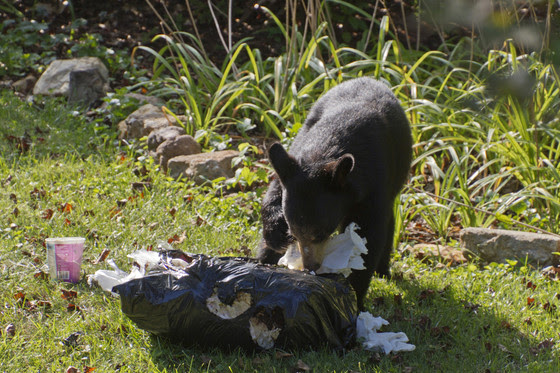
The DNR invites the public to attend the Bear Aware Webinar at 6 p.m. on April 19 to learn about how to co-exist with black bears. / Photo Credit: iStock/AwakendEye
MADISON, Wis. – The Wisconsin Department of Natural Resources (DNR) invites the public to attend the Bear Aware Webinar at 6 p.m. on April 19 to learn about living among black bears.
Wisconsin is home to a thriving black bear population estimated at more than 24,000 bears. Although the black bear primarily lives in the far northern third of the state, bears are becoming more common in the lower two-thirds of the state than ever before due to a growing population.
By understanding bear behavior, people can reduce negative human-bear conflicts. Webinar attendees will hear from DNR and USDA-Wildlife Services bear experts about bear habitat and history and get tips for reducing the potential for bear conflicts around homes and businesses.
“Every year, the DNR and our partner, USDA-Wildlife Services, receive more than 700 calls related to nuisance black bears. The reality is that most of these bear conflicts are preventable or can be resolved by making small changes to our behavior,” said Brad Koele, DNR Wildlife Damage and Nuisance Specialist. “Bear behavior is not always predictable but knowing a few key pointers on what to do – and what not to do – goes a long way to avoiding conflicts and keeping bears happy, healthy and wild.”
Following a presentation from the experts, there will be a Q&A session where the public can ask about bear biology and how to co-exist with Wisconsin’s largest carnivore.
Black bears are naturally cautious animals that generally avoid contact with people for their safety, but conflicts between people and bears can arise. Bears can quickly learn to associate humans with food when food sources are available.
If a bear finds food, such as bird feed or garbage near your home or cabin, it will likely return for more. Bear visits are more likely to stop when food is no longer available. Bears will periodically check sites where food was once available, so it may take several days to weeks after a food source has been removed for a bear to stop visiting food sites altogether.
It is important to make sure these tasty food sources are hidden from bears at all times of the year, but it’s especially crucial in warmer months when bears are more active.
While bears usually are solitary forest animals, their powerful sense of smell can lead them into urban areas to search for food, especially in the spring and fall. Black bears are secretive animals and usually try to avoid people. However, conflicts with humans can occur when bears destroy gardens, bird feeders, apiaries and trash cans.
The DNR’s Living With Black Bears In Wisconsin pamphlet is a great resource for learning more about co-existing with bears in Wisconsin.
More information about black bear behavior and avoiding unwanted encounters is available in the DNR’s Living with Bears in Wisconsin brochure.

